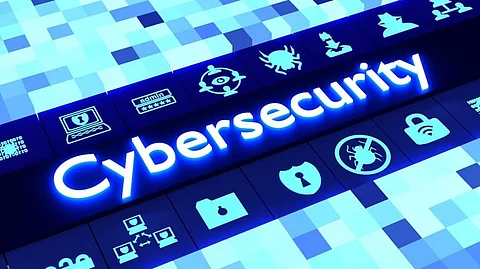

The scale and seriousness of cyber disasters as of late has caught the consideration of business leaders far and wide. Cyberattacks are among the top 10 risks, regarding the likelihood and seriousness of impact, in the World Economic Forum's most recent Global Risks Report. In the US, 53% of CEOs are incredibly worried about the effect of cyber threats on their development prospects, as indicated by PwC's Global CEO Survey.
Numerous companies have increased investment in their prevention, detection, and response capabilities. However, they time and again end up in recovery mode after an attack, if ransomware is the offender, wishing they had prepared and actualized better recovery options.
The ability to recover from adverse events –, for example, a ransomware attack and getting back to ordinary activities is alluded to as "cyber resilience." Achieving more significant levels of cyber resilience is a need for any business that depends on access to data. When workers can't access information, regardless of whether it's stored on the network or on their own company-issued devices, the outcome is more than lost efficiency. Downtime and system interruptions can influence your associations with partners and customers.
It could make you miss out to a significant contender during a critical period of negotiations, and result in harmed reputation and lost credibility. When downtime happens over and again, it channels IT assets and removes IT staff from other key needs. That is the reason when you gauge the true expense of downtime, you need to factor in something other than the hourly expense of users who are straightforwardly affected. It's likewise why there's reasonable support for putting resources into a comprehensive business cyber resilience strategy.
Here are a couple of cybersecurity strategies that organizations should embrace to make their operations more secure and resilient.
There's no uncertainty, cybercriminals can be shrewd and efficient. As organizations become more powerful at recognizing likely dangers, hackers have adjusted their strategies to dodge network firewalls and different safeguards. These avoidance procedures have made it important for organizations to deploy internet security with threat intelligence to distinguish malicious attacks that in any case look favorable. An advanced business antivirus solution utilizes inventive innovation to detect, block and remediate (by isolating) pernicious attacks that sidestep other, less refined antivirus solutions.
A hypothetical disaster drill (otherwise called a tabletop simulation) leads you to practice and perfect your company's response to a cyber disaster. A powerful disaster drill should be interactive, realistic, and moderately stressful for participants. Drills should give workers a superior thought of their roles and responsibilities in a cyber disaster, and more prominent trust in their capacity to respond. Utilizing reasonable situations that are more uncertain will uncover response gaps. Tending to those holes will improve the reaction to, and recovery from, a real disaster.
Organizations need to put resources into a comprehensive and cost-effective Security as a Service (SaaS) solution. Having a platform-based Cloud Content Security provider that incorporates email, web, next-generation firewall, endpoint security, and multi-factor authentication services will empower them to bypass cyber threats.
With the quick moving labor force and the persistently evolving environment, there is a requirement for enterprise-grade smart solutions that give access to a comprehensive smart perimeter security proposition that is vigorous, adaptable and can be readily deployed. With service providers presenting new capacities, companies need to remain side by side of the developments and must have a positive cybersecurity plan to implement these market leading threat protection solutions.
Organizations owe it to their customers, stakeholders and partners to have a cyber resilience plan set up that tends to the full scope of data loss scenarios, including malware, incidental or malicious deletion, hardware failure and natural disasters. Since recognizing and remediating data loss can be tedious, it's important to have copies of files and data for business continuity.
Scheduled backup with file versioning is fundamental for moderating explicit kinds of malware, like ransomware. With backup and file versioning, you can recuperate a spotless adaptation of a document as it existed before the disease occurred. The scheduling feature is significant since surrendering it to customers will ultimately lead to data loss. Scheduled backup with file versioning can mean the difference between paying a huge number of dollars in payoff, and full recovery with no ransom payment.
Organizations are needed to implement IDS (intrusion detection services) and instruct their labor force digitally. They need to discuss routinely with their workers on cyber security protocols and create training programmes on information security and protection issues. The training projects can incorporate identifying phishing attempts, using a secure VPN and using end-to-end encrypted collaboration tools.
Join our WhatsApp Channel to get the latest news, exclusives and videos on WhatsApp
_____________
Disclaimer: Analytics Insight does not provide financial advice or guidance. Also note that the cryptocurrencies mentioned/listed on the website could potentially be scams, i.e. designed to induce you to invest financial resources that may be lost forever and not be recoverable once investments are made. You are responsible for conducting your own research (DYOR) before making any investments. Read more here.
